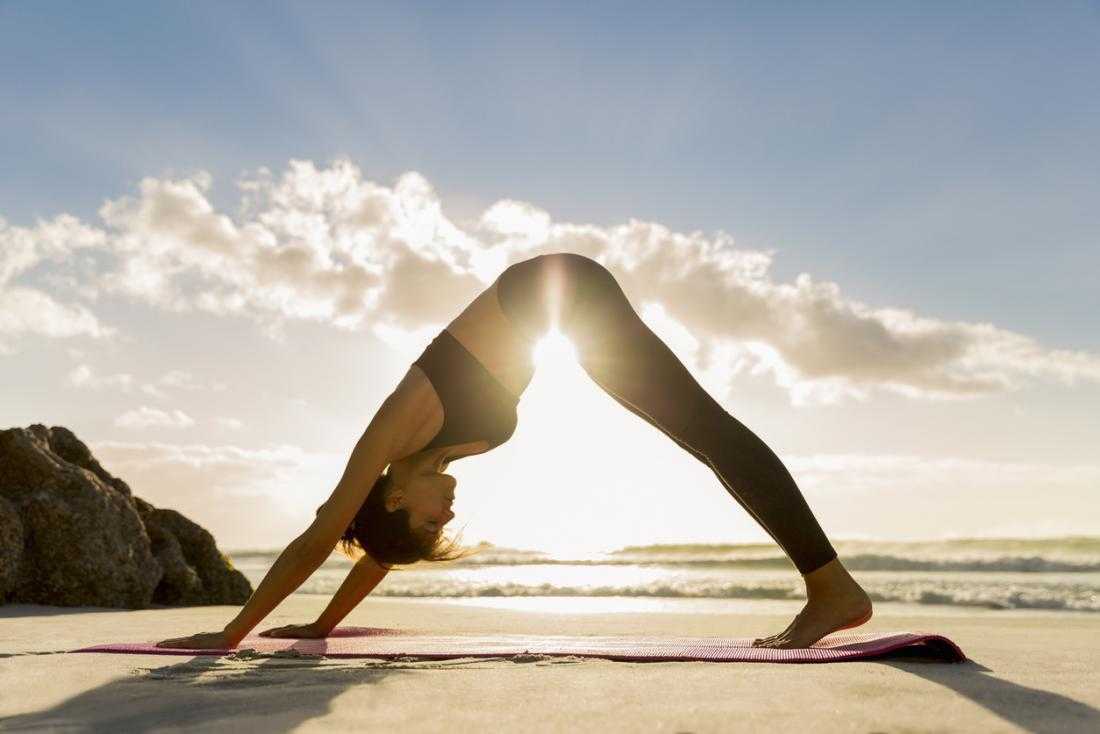BY: TRISHA CURLING
This 3-letter word definitely gets our attention. The 4-letter word, however, that can contribute positively to our experience with sex is YOGA. Sex is a wonderful and natural part of human existence and experience, so let’s explore the positivity and how yoga can contribute to a healthy sex life.
Yoga allows us to learn a great deal about both our internal and external bodies. It allows us to slow down and hear our internal dialogue more clearly. We get an opportunity to get in line with our needs and desires in all aspects of our lives. Yoga helps to contribute to the mental clarity we need in order to access the systems in our bodies that help us to be present and relax when we need to. This is important during the sexual experience so that we can truly enjoy our partners and receive the pleasure exchange.
Women in particular (for a number of reasons) may have difficulty truly being in the moment when attempting to enjoy this union with our partners. There may be a number of other responsibilities on the mind, therefore robbing us of the experience at hand. The act alone of taking time for the breath and/or asana practice reinforces our value on alone time and self-care. These acts of focusing on the breath and/or movement teach us how to focus. This spills over into other areas of our lives, including lovemaking with our partners. We learn that this too contributes positively to our mental health. It is a time of connection with not only our partners but ourselves. We develop further awareness around our desires, happiness, and pleasure senses.
Outside of “traditional” intimate spaces, we can also partake in activities like partner yoga. I did a workshop with Drew Hume of Navina (A company of Advanced Thai Yoga Practitioners) where Drew said: “Touch is the only sense that cannot tell a lie”. I saw the truth in that right away. We can truly feel intention through touch. I felt like there is also then a true connection to be made with partner yoga for example, because you are moving through a series of poses while making close contact and actually touching your partner. You can feel the intention behind each pose and/or the supportive nature of various poses. This can enhance a couples’ connection outside of the bedroom, therefore increasing the connection inside the bedroom. The bond, closeness, and touch experience in partner yoga will contribute to the relationship positively.
Practicing asana also has quite an impact on increasing our energy levels and even the balance of hormones. We may lose the desire for sex if these two things are not where they need to be. During asana, we are strengthening and improving flexibility. Being stronger, therefore having more stamina allows for a heightened sexual experience. The flexibility can allow for more creativity, therefore also heightened pleasure.
Sex may not be a subject that everyone is comfortable with, but it is definitely a pure and natural part of life. It is a normal desire and a healthy part of any intimate relationship between adults. Yoga provides a pathway to understanding your own sexual needs and desires. We start there, in order to be able to express those needs positively with our partners. Yoga is definitely the ultimate 4-letter word.

